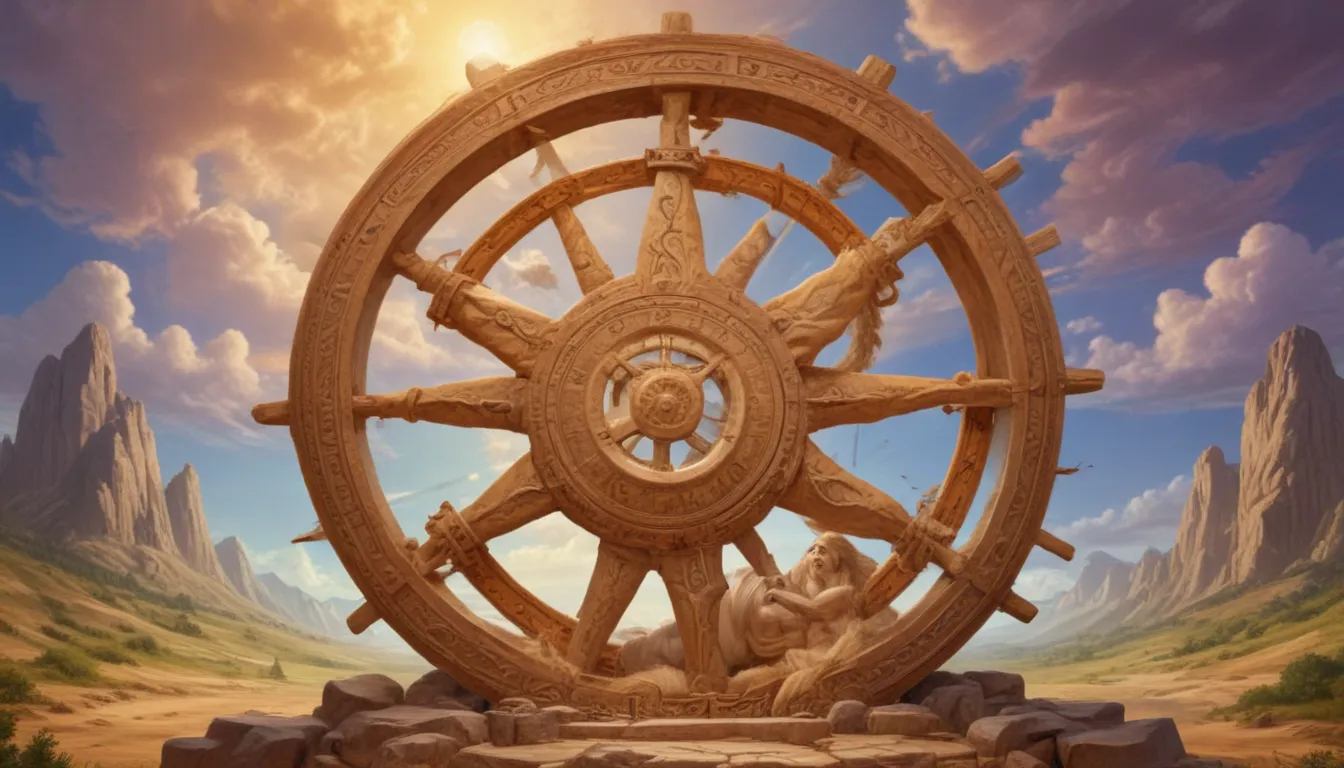
Ezekiel saw the wheel is a biblical passage that has been subjected to numerous interpretations over the centuries. The story, found in the Book of Ezekiel, tells of a vision experienced by the prophet Ezekiel in which he witnessed a divine chariot or throne being carried by four living creatures. These creatures were supported by wheels within wheels, with the appearance of human hands at their base. This passage has been widely debated among religious scholars and mystics alike, as it contains deep spiritual meaning and symbolism that can provide valuable insights for our lives today.
In this comprehensive guide, we will explore the spiritual meaning behind Ezekiel’s vision of the wheel, delving into its various components and their significance in understanding the divine realm and our place within it. We will also discuss how this passage relates to other biblical themes and concepts, as well as offer practical applications for living a more spiritually fulfilling life.
Understanding Ezekiel’s Vision: The Four Living Creatures
The first aspect of Ezekiel’s vision that we must examine are the four living creatures that support the divine throne. These beings have been variously described as having the face of a man, a lion, an ox, and an eagle (Ezekiel 1:10). The identification of these creatures has been a topic of debate among scholars, with some suggesting that they represent different aspects of God’s nature or divine attributes.
The man represents wisdom and understanding, while the lion symbolizes strength and courage. The ox signifies service and sacrifice, and finally, the eagle stands for vision and foresight. Together, these four living creatures form a harmonious whole that embodies the fullness of God’s power and presence in the world.
The Wheels Within Wheels: Symbolism of Motion and Movement
At the core of Ezekiel’s vision is the image of wheels within wheels, which are described as being “full of eyes” (Ezekiel 1:18). This intricate design serves to convey a sense of motion and movement that is essential to understanding its spiritual meaning. The wheels represent the constant activity and dynamism of God’s kingdom, as well as His omnipresence in our lives.
Moreover, the fact that these wheels have eyes suggests that they are constantly observing and monitoring all aspects of creation. This serves as a reminder that nothing escapes God’s watchful gaze or His ability to see into the depths of our hearts and minds.
The Human Hands: Connection between Heaven and Earth
The presence of human hands at the base of these wheels is another crucial element in Ezekiel’s vision. These hands serve as a bridge between heaven and earth, connecting the divine realm with humanity’s everyday experiences. They remind us that God is intimately involved in our lives and that He desires to guide and support us through every challenge we face.
Furthermore, the fact that these hands are part of the larger mechanism of the wheels suggests that our actions have consequences that extend far beyond our immediate circumstances. Every decision we make and action we take can impact not only ourselves but also the wider world around us.
Ezekiel’s Vision in Relation to Other Biblical Themes
Ezekiel’s vision of the wheel is closely connected with other biblical themes and concepts, which serve to deepen our understanding of its spiritual meaning. For example, the idea of wheels within wheels can be linked to the concept of divine providence, where God’s actions are intricately woven together like a complex tapestry.
Additionally, the presence of living creatures in Ezekiel’s vision recalls the image of cherubim found throughout the Bible, particularly in relation to the Ark of the Covenant and other sacred objects. These celestial beings serve as guardians of God’s presence and remind us that His glory is something to be revered and respected.
Practical Applications for Living a Spiritually Fulfilling Life
The spiritual meaning contained within Ezekiel’s vision offers valuable insights for living a more spiritually fulfilling life. By understanding the role of God in our lives, we can better navigate the challenges and difficulties that arise along the way. Here are some practical applications to consider:
- Embrace change and growth: The constant motion and movement represented by the wheels within wheels remind us that change is an integral part of life. Rather than resisting these changes, we should embrace them as opportunities for personal growth and development.
- Trust in divine providence: Recognizing that God’s actions are interconnected like a complex web can help us trust in His plan for our lives, even when things seem uncertain or overwhelming.
- Be mindful of your actions: Understanding the connection between heaven and earth through the human hands suggests that we should be intentional about our choices and how they impact others.
- Seek wisdom and understanding: Just as the man-faced living creature represents these divine attributes, striving to cultivate these qualities within ourselves can lead to greater spiritual insight and awareness.
- Respect the presence of God: The cherubim found throughout the Bible serve as guardians of God’s glory, reminding us to approach His presence with reverence and awe.
In conclusion, Ezekiel’s vision of the wheel provides a rich tapestry of spiritual meaning and symbolism that can help guide us on our journey towards greater understanding and connection with the divine. By exploring its various components and their significance, we can gain valuable insights into living a more fulfilling and meaningful life.





